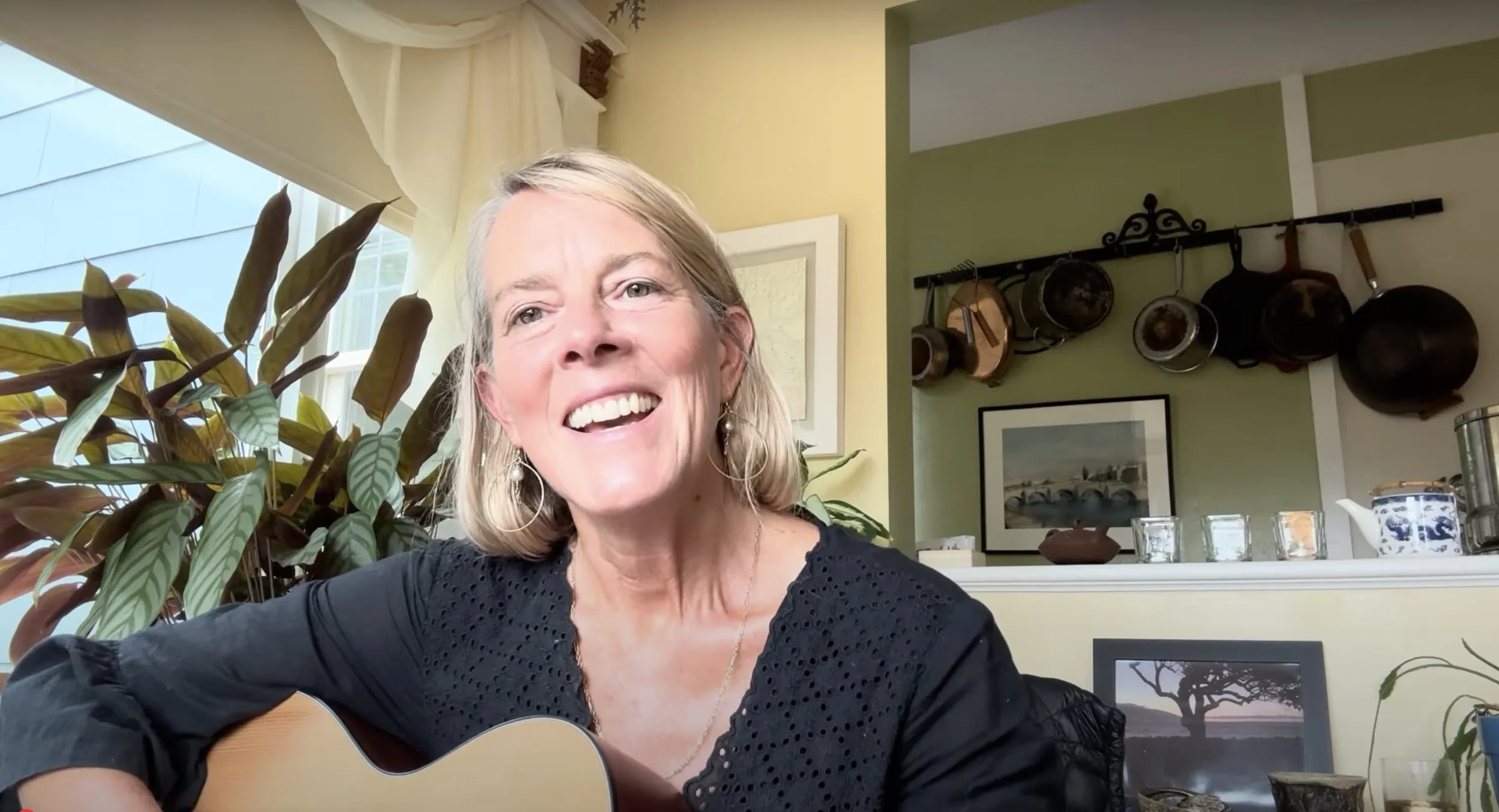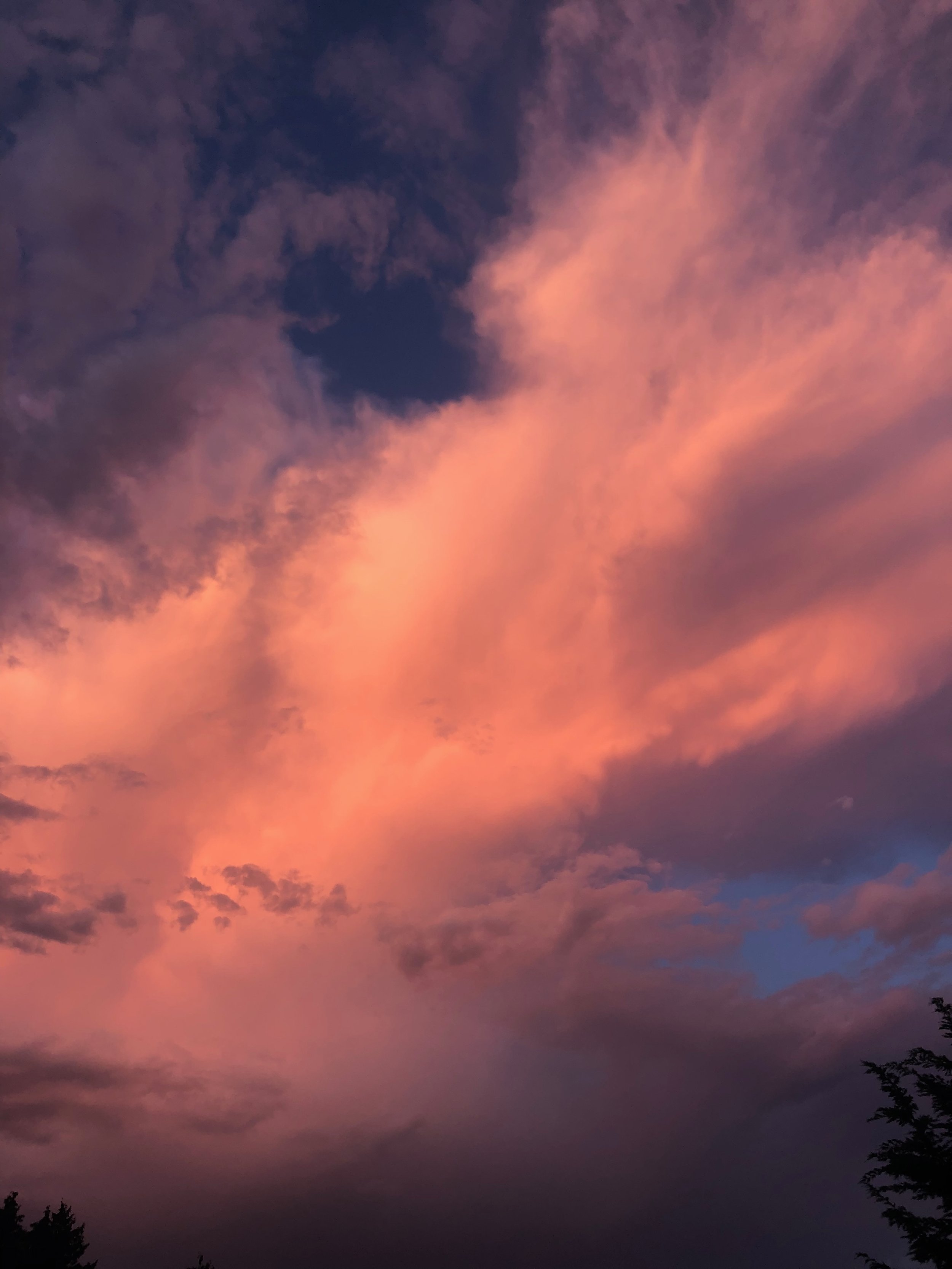I have written many songs this year, in a burst of ‘beginner’s’ energy, but this most recent one opens the door to a new way of walking in the world more than most. It’s about coming home to oneself, the safest home there is.
Herbie Hancock on Miles Davis
Creativity Research
Alan Watts on Forgiveness
This is one of the best brief talks on the nature of forgiveness I have come across. And of course, Alan Watts can say it like no other. With humor, gentleness and truth. “Empathy is the art of clipping into another person’s skin. Empathy asks, “What pain gave rise to this action before me?”
Alan Watts on How to Forgive Yourself and Forgive the World
What is Reality?
Internal & External Coherence
Andrea Hiott, the creator of the podcast Love and Philosophy, interviewed me early on. It was one of the most personal conversations I’ve ever had publicly. It is a deep dive into what has shaped me and how it’s formed my view of the world and my ‘waymaking’ within it.
Listen to the interview here:
The Story of Creative Ground
After leaving my last government position as a policy aide for then-Seattle Mayor Paul Schell in 1998, I sought a more fulfilling outlet for my innate creative disposition and belief in creativity’s power to enliven and empower all aspects of our lives. I developed a business plan for Arts Corps, an organization that convened a faculty of teaching artists to work with young people in and out of school to facilitate their self-expression and confidence through creative practice. We raised $150k in the first year to get the program off the ground and it continues today to serve young people who would not otherwise have access to arts learning.
Much of what I learned about excellent teaching and facilitating creativity and self-expression comes from watching Arts Corps’ teaching artists. When I left Arts Corps in 2008, I returned to the world of politics and leadership but this time with a new mission--to bring creative practice, facilitation and strategy to the organizations I would work with under my new umbrella, Creative Ground.
Since then, I have been diving deep to learn what keeps us from our own creative flow so we can express ourselves more authentically in all aspects of our lives. I have brought creative practice into over 75 different organizations in the public, private and non-profit sectors. In the last 15 years, I have worked with a diverse array of teams and culture—from the plumbers in the Parks Department to the President of a local union, to the CEO of a Ski Company. The results of my work has spread mostly through word of mouth and trust clients have in me.
Perhaps my biggest take-away is that it’s fully time to play again and take ourselves less seriously. Work infused with play may just help us discover a culture of bliss long forgotten. Join me there.
"The things we fear most in organizations—fluctuations, disturbances, imbalances—are the primary sources of creativity."
— Margaret J. Wheatley
"A person might be able to play without being creative, but he sure can't be creative without playing."
— Kurt Hanks and Jay Parry
Seattle Parks Department
One of Creative Ground’s first clients was the Seattle Parks & Recreation Department. My primary focus at the time was leading staff retreats that focused on developing creative habits of mind for higher staff engagement and performance. I worked with the Playfields Director, the Recreation Division, and some of the Parks operations staff. Michele Finnegan, Director of Finance, whose perspective was instrumental in several of my organizational assessments with the Parks Department, became one of my strongest collaborators.
“Creative Ground’s work with clients exemplifies the creative habits they are trying to cultivate in us, particularly tolerance for ambiguity, challenging assumptions, risk-taking, self-reflection and persistence. Lisa’s approach to designing and implementing projects allows for a truly creative collaboration between her vision and that of her client’s to achieve the greatest possible impact.
-Michele Finnegan, Director of Finance, Seattle Parks & Recreation
Thought Partnership for Creativity
In the first decade of my career, I worked primarily for elected officials and built many connections within Seattle’s local and regional political worlds. I worked for Tom Weeks, former City Council Member and served on the New School Foundation Board with him several years later. Reuven Carlyle, a WA State legislator for many years, and I shared many ideas over the years about the challenges in government and how we could make government work better. All three of us sought to challenge the status quo in our own ways.
“Lisa offers far-reaching, creative visions and then builds smart, effective, and politically savvy ways to get there. She pushes a group's thinking way outside the box, then has a delightful ability to bring ideas back to the ground so real, sustainable action can take place. I am always sure that the projects she works on will challenge our assumptions and reveal new solutions and ways of seeing the world.”
–Tom Weeks, previous Seattle City Council Member
“Lisa brings deep insight, serious experience, and a unique perspective that is extremely valuable to organizations struggling with major personnel, policy and structural challenges. I have found her counsel to be nuanced and challenging, focused and compelling. She views change management as a cause and helps leaders to embrace systems holistically. A true professional and a kind, gracious person.”
--Reuven Carlyle, former Washington State Senator
Community Planning in Johnson City
Sarah Davis invited me to Johnson City, Tennessee 25 years ago seeking to learn from my experience creating Arts Corps, the non-profit arts organization I founded in 2000 and led as Executive Director for 8 years. She asked me to be the keynote for their annual arts conference and invited me back again a few years later. Since then, she has engaged me in a number of ways, all related to facilitating creativity with individuals and within groups.
Our most interesting collaboration was for the City of Johnson City. City leaders hired me to shape a day-long workshop to engage over 100 community leaders on their visions for the City’s future and how to get there. I designed a sequence of exercises to weave the personal together with the collective in such a way that their single vision was able to hold a cohesive dream that all participants could see themselves within.
“For 14 years, I’ve seen Lisa in numerous professional situations—motivational speaking, retreat facilitation, community visioning, and leading. She is a deep listener and sows seeds for change that resonate long after she has left the room. Witnessing participants reconnect with their own creative rocket fuel is something to behold! Her authentic spirit leads us to new places where we can tap into our full potentials and see the vision for a world healed and enlivened by collaboration and creativity. Lisa IS the rocket fuel that everyone needs.”
–Sarah Davis, Board Member, Going Elemental
Arts for All Not Just for Some
A Game Changer
The Dangers of a Single Story
The TED Talk summary for Chimamanda Adichie’s talk says it best…Our lives, our cultures, are composed of many overlapping stories. Novelist Chimamanda Adichie tells the story of how she found her authentic cultural voice -- and warns that if we hear only a single story about another person or country, we risk a critical misunderstanding.
This truth parallels what I say so often about creativity, which is the dangers of telling ourselves a single story about who we are and what’s possible for our lives.
Break the Pattern Before it Breaks You
This year I launched a YouTube channel called ‘Rollin’ Different’ and has become a place for me to post my novice song-writing skills and short bits of wisdom related to creativity and a heart-led life. A recent post confronts the challenging truth that if we aren’t willing to shift old patterns, they will come calling and force the shift onto us in a more uncomfortable way. I’ve run into so many walls in my own life as I tried to avoid looking at, and then breaking, old patterns. My hope is this wisdom might be a good catalyst for others in this moment.
Bushwhacking a Trail Home
This essay is a pithy summary of several ways to find more personal agency and power. “To choose to act in a new way that is not supported by the old software in our brains is a highly creative act. If I am used to attuning exclusively to the outside world and meeting other people’s needs before my own–because that’s the language of my subconscious programming–my choice to attune first to my own needs makes me an agent of creativity and personal power.”
The Transformative Power of Classical Music
With almost 17 million plays, this talk brings me to tears each and every time. Conductor Benjamin Zander has been teaching people how to listen to classical music for many decades. The way he engages the audience in this talk gets the highest marks. Worth every minute of your time for your own inspiration about what it is to be human.
https://www.ted.com/talks/benjamin_zander_the_transformative_power_of_classical_music
Find Me Here
Escape From Your Own Alcatraz
A post from my YouTube channel Rollin’ Different. Recognizing I always had the key to unlock the 'jail cell' of my own difficulties. The world I have lived in comes from the ideas & beliefs I hold onto, contributed to by the ideas & beliefs of the world around me, internalized by me and my need for safety and for fitting in. So I Invite us all to see that the key to let us out into a much wider, more creative existence sits quietly but certainly in our pockets. Check and see!












